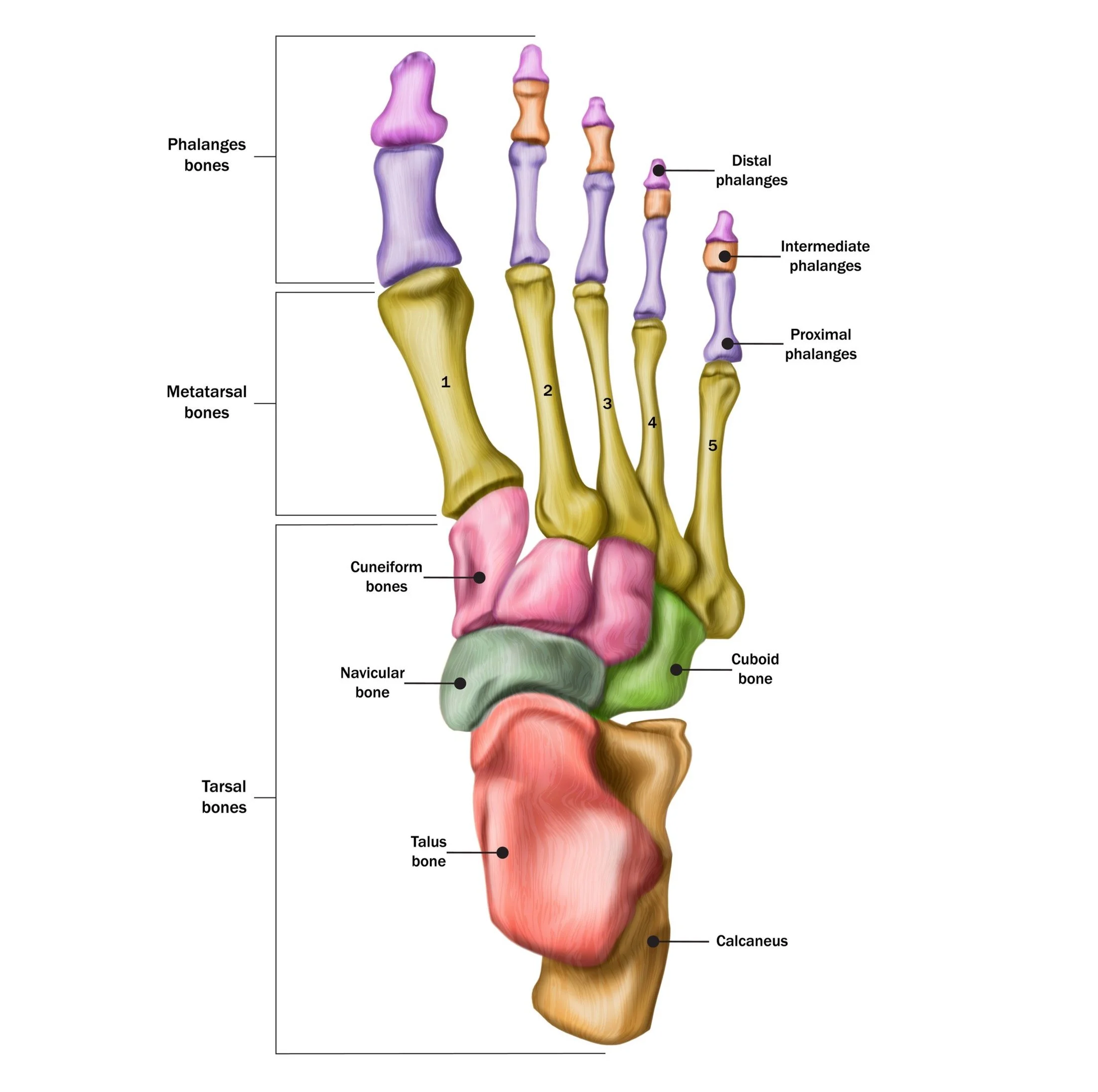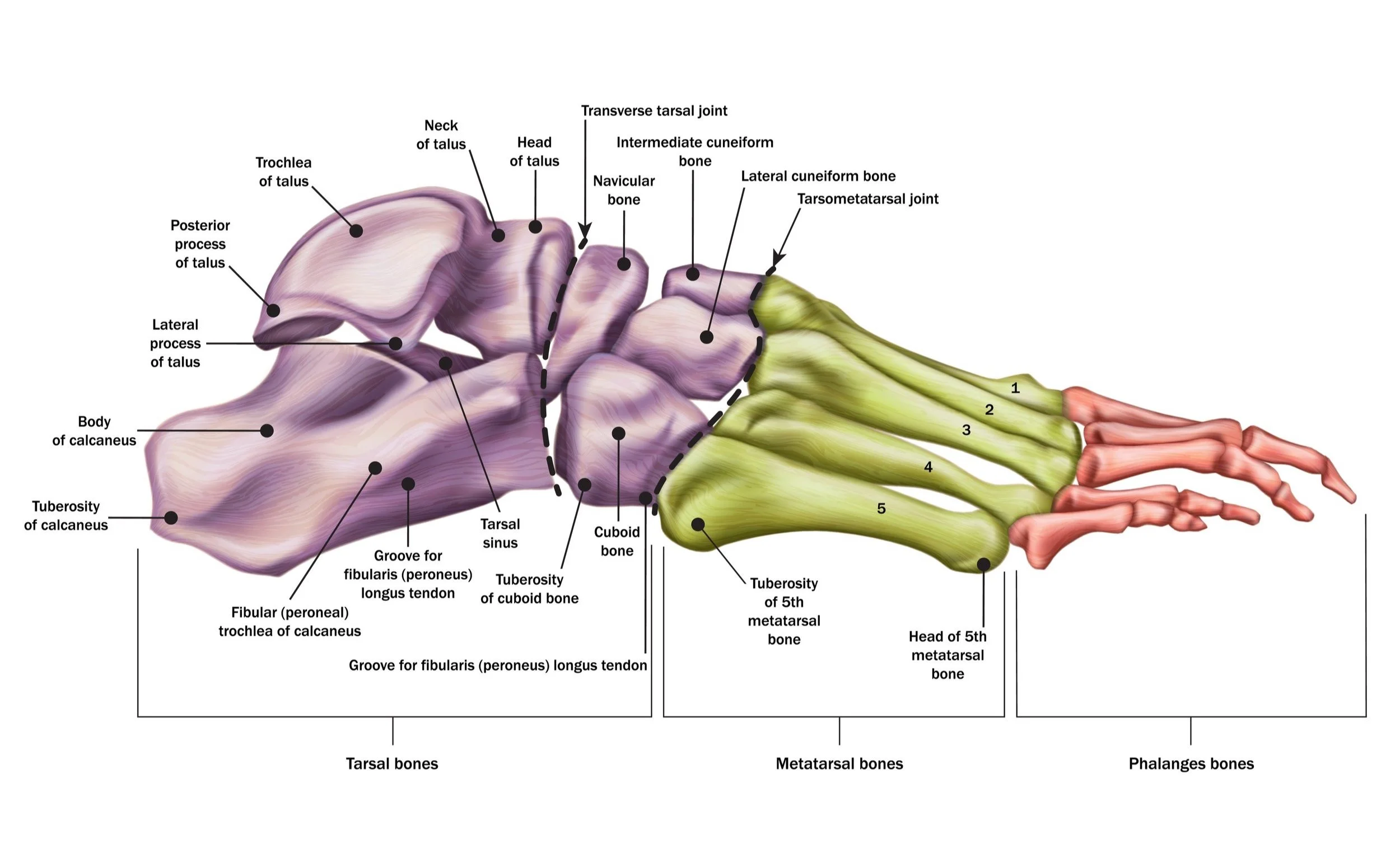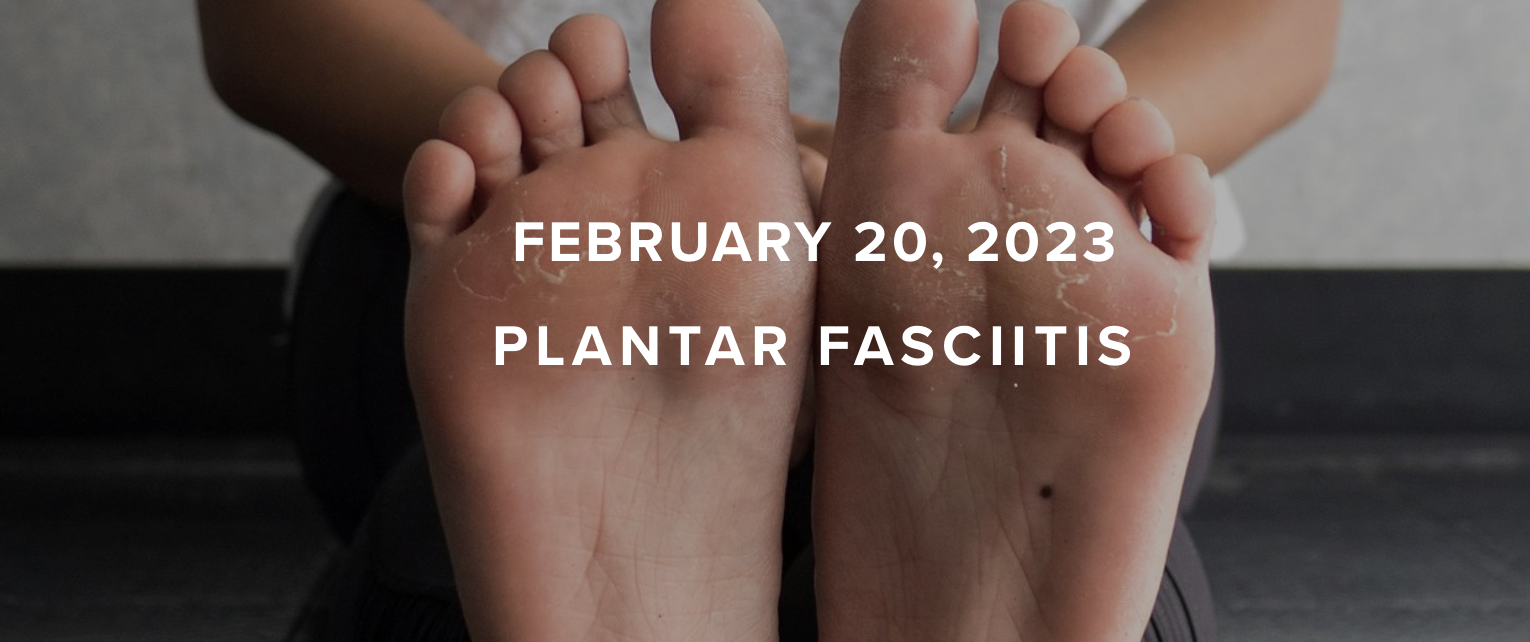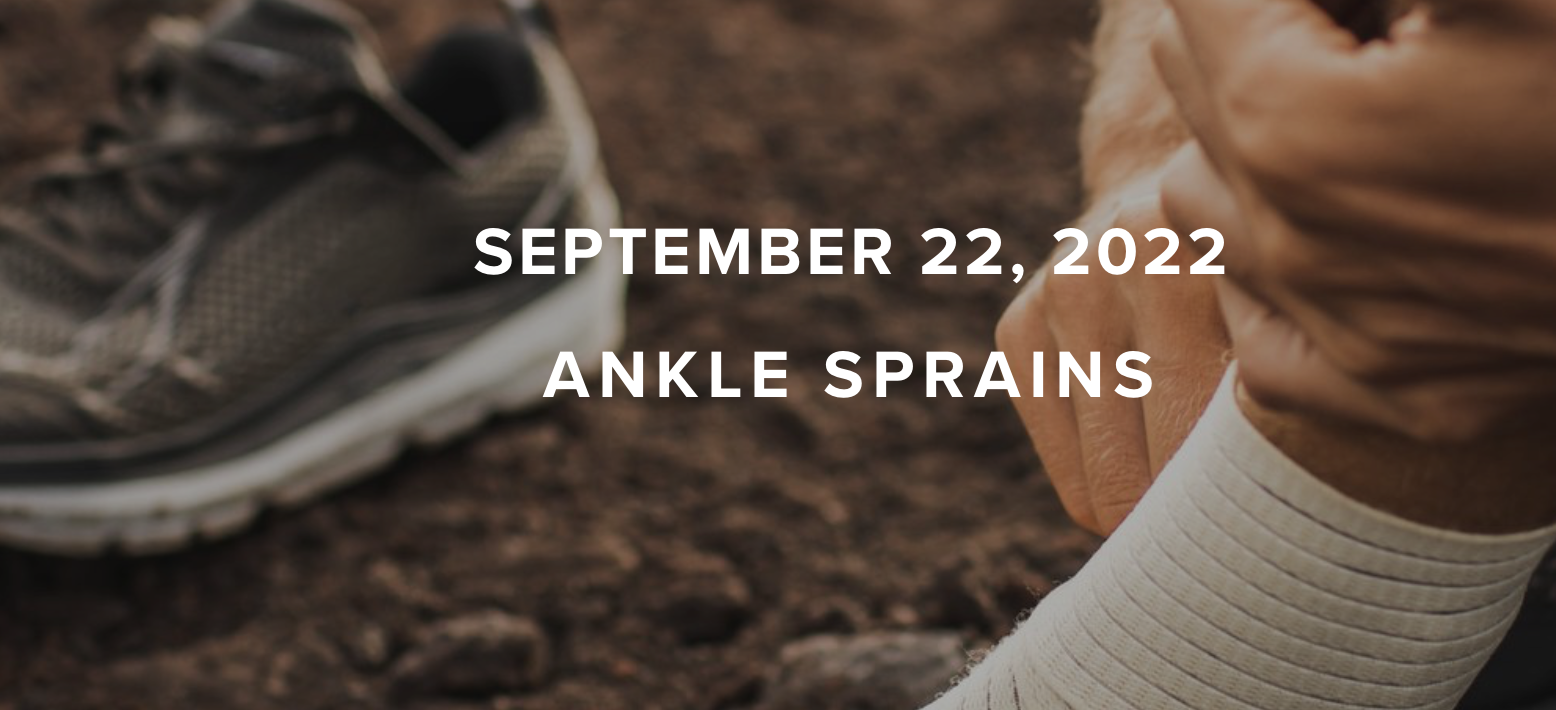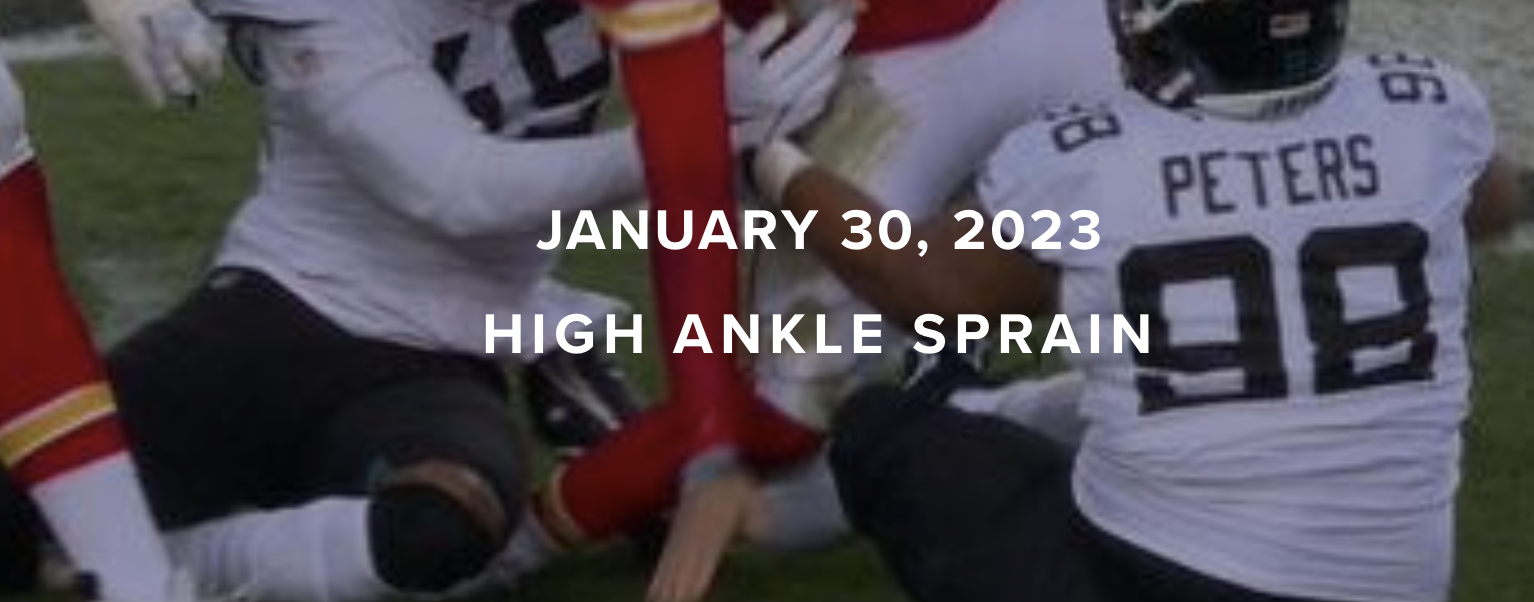The Foot
The human foot is a strong and complex mechanical structure containing 26 bones (some people have more), 33 joints (20 of which are actively articulated), and more than a hundred muscles, tendons, and ligaments.
The foot can be subdivided into the hindfoot, the midfoot, and the forefoot:
The hindfoot is composed of the talus or ankle bone and the calcaneus or heel bone. The two long bones of the lower leg, the tibia and fibula, are connected to the top of the talus to form the ankle. Connected to the talus at the subtalar joint, the calcaneus, the largest bone of the foot, is cushioned inferiorly by a layer of fat.
The five irregular bones of the midfoot, the cuboid, navicular, and three cuneiform bones, form the arches of the foot which serves as a shock absorber. The midfoot is connected to the hind- and fore-foot by muscles and the plantar fascia.
The forefoot is composed of five toes and the corresponding five proximal long bones forming the metatarsus. Similar to the fingers of the hand, the bones of the toes are called phalanges and the big toe has two phalanges while the other four toes have three phalanges. The joints between the phalanges are called interphalangeal and those between the metatarsus and phalanges are called metatarsophalangeal.
foot injuries that may require physical therapy include:
When it comes to foot injuries, physical therapy can play a crucial role in rehabilitation and recovery.
Plantar Fasciitis
Inflammation of the plantar fascia, a thick band of tissue that runs along the bottom of the foot. It often causes heel pain and can be associated with overuse, improper footwear, or biomechanical abnormalities.
Achilles Tendonitis
Refers to inflammation of the Achilles tendon, which connects the calf muscles to the heel bone. It can result from overuse, repetitive stress, or tight calf muscles.
Stress Fractures
Small cracks in the bones that occur due to repetitive stress and overuse. Certain foot bones, such as the metatarsals, are more prone to stress fractures. Physical therapy can aid in the recovery process by promoting bone healing and gradually reintroducing weight-bearing activities.
Morton's Neuroma
A painful condition that affects the area between the toes, usually the third and fourth toes. It involves the thickening of the tissue around the nerve leading to the toes, resulting in pain, tingling, or numbness. Physical therapy can help address contributing factors like faulty foot mechanics or improper footwear.
Bunions
A bony bump that forms at the base most commonly of the big toe. It can cause pain, swelling, and difficulty with shoe fitting. Physical therapy can provide exercises to improve joint mobility, strengthen surrounding muscles, and manage symptoms associated with bunions.
Metatarsalgia
Condition characterized by pain and inflammation in the ball of the foot, particularly the metatarsal heads. Physical therapy can help address factors such as muscle imbalances, gait abnormalities, or improper footwear that contribute to the development of metatarsalgia.
Plantar Plate Tear
A thick ligamentous structure that helps stabilize the toe joints. A tear in the plantar plate can lead to pain, instability, and difficulty with walking or balance. Physical therapy can assist in restoring joint stability, improving toe alignment, and strengthening the surrounding structures.
Achilles Tendon Rupture
Occurs as a result of a sudden forceful trauma of the calf muscles or from repetitive stress over time. It causes a sudden, sharp pain in the back of the ankle, difficulty walking, and a noticeable gap or indentation above the heel.
Osteochondral Lesion
A defect or injury to the cartilage and underlying bone within the ankle joint. It can occur due to trauma, repetitive stress, or as a result of an ankle sprain. Symptoms include pain, swelling, joint stiffness, and instability.
Ankle Bursitis
Inflammation of the small fluid-filled sacs called bursae, which cushion and reduce friction between tendons, ligaments, and bones. Ankle bursitis often occurs due to repetitive motions, excessive pressure, or direct trauma to the bursae around the ankle, leading to pain, swelling, and warmth in the affected area.
It's important to note that each foot injury is unique, and treatment plans should be tailored to individual needs. Physical therapists can assess the specific injury, provide appropriate exercises, stretches, manual therapy, and other interventions to facilitate recovery and help individuals regain optimal foot function.
Foot & Ankle WEBINARS
Foot & ankle BLOGS
AUTHORS & CONTRIBUTORS
BENJAMIN WOBKER, PT, MSTP, CSCS
HORK DO, PT, DPT
MARK BOUMA, PT, DPT, OCS, COMT, FAAOMPT, CFI
KATIE HUTCHINS, PT, DPT
MANDIE MAJERUS, PT, MSPT, OCS, CSCS, SFMAC, CMPT, CFSC
BOB ADAMS, DO, USATF TEAM PHYSICIAN 1984-2015
GHISLAINE ROBERT, MD
JONATHAN HALL, MD
LAWRENCE MAURER, DPM
PETER VICENT, DPM
Disclaimer:
This website is an information and education resource for health professionals and individuals with injuries. It is not intended to be a service for patients and should not be regarded as a source of medical or diagnostic determination, or used as a substitute for professional medical instruction or advice. Not all conditions and treatment modalities are described on this website. Any liability (in negligence or otherwise) arising from any third party acting, or refraining from acting, on any information contained on this website is hereby excluded.



